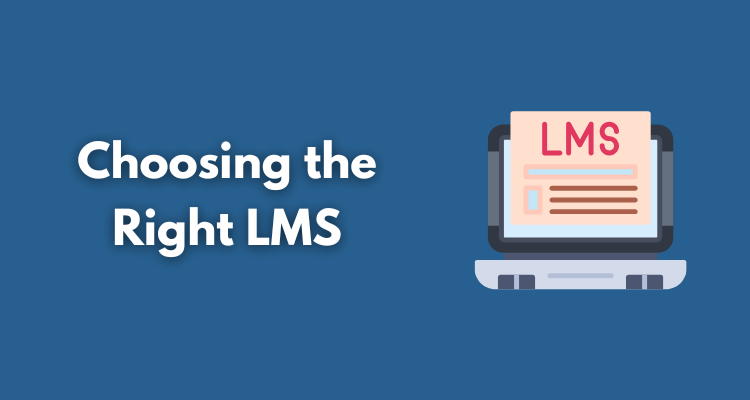Nonprofit organizations operate in a unique environment where limited resources, high expectations, and social impact are closely connected. One of the most important aspects of nonprofit success is effective employee and volunteer training.
Using a Learning Management System (LMS) is the smartest way to deliver consistent, scalable, and accessible training. But with so many options available, how can you choose the best lms for nonprofits? Let’s explore everything you need to know.
Why Nonprofits Need an LMS
Nonprofits rely heavily on people—both paid employees and volunteers—to achieve their mission. Unlike large corporations, nonprofits don’t always have the resources to hold frequent in-person training sessions or hire full-time trainers. An LMS allows these organizations to deliver training online, saving both time and money.
With an LMS, nonprofits can create a central training hub where all learning materials are stored and accessed anytime. This means staff in different cities or countries can receive the same level of training. It also improves learning consistency, which is essential when dealing with sensitive topics like health, safety, compliance, or donor communication.
Benefits of Using an LMS for Nonprofits

One of the most attractive benefits of using an lms for nonprofits is cost-effectiveness. Many LMS providers offer discounts or even free versions for nonprofit organizations. This allows small and mid-sized nonprofits to access powerful tools without exceeding their budgets.
Another major benefit is flexibility. With an LMS, training doesn’t have to be scheduled at specific times. Staff and volunteers can learn at their own pace, which is especially useful for those who work part-time or remotely. A good Learning Management System also tracks learner progress, completion rates, and performance, making it easy to monitor who has finished the required training and who may need additional support.
The scalability of an LMS is also crucial. As your nonprofit grows and adds more team members, you can easily expand your training programs without needing more physical space or trainers. This makes an LMS a long-term investment.
Key Features to Look for in an LMS for Nonprofits

When choosing the best LMS for your nonprofit, look for key features that match your needs. The first and most important feature is ease of use. Many nonprofit employees and volunteers may not be highly tech-savvy, so the LMS must be simple and user-friendly.
The second feature is customization. Your training should reflect your organization’s mission, values, and specific requirements. A customizable LMS allows you to brand the platform with your logo, design unique learning paths, and use your preferred language and content formats.
Mobile accessibility is another essential feature. Many nonprofit workers are in the field or on the move. A mobile-friendly LMS ensures that they can access training materials from their smartphones or tablets at any time.
Integration with other tools is also important. If your nonprofit uses Zoom, Google Workspace, or a CRM system, make sure your LMS can connect with them. This creates a smoother workflow and saves time.
Lastly, reporting and analytics features help you track progress and measure the effectiveness of your training programs. You can identify which courses are working, which ones need improvement, and which learners need extra support.
Top LMS Recommendation: Raccoon Gang’s Open edX LMS
If you’re looking for a powerful and affordable solution, the LMS for nonprofits by Raccoon Gang is an excellent choice. Built on the open-source Open edX platform, it’s designed specifically for nonprofit organizations.
This LMS offers full customization, advanced reporting, multimedia content support, and seamless integrations. Since it’s open-source, there are no license fees — making it budget-friendly. Whether you’re training 10 people or 1,000, Raccoon Gang’s LMS scales with your organization’s needs.
Steps to Successfully Implement an LMS in a Nonprofit
Start small. Begin with one or two essential training courses, such as onboarding, compliance, or even financial basics like fund accounting, and roll them out to a pilot group. Gather feedback and make adjustments before launching organization-wide.
Engage your team. Get input from staff and volunteers about what kind of training they need. This ensures your content is relevant and practical.
Use engaging content. Don’t just rely on text—include videos, quizzes, and real-life scenarios. This keeps learners interested and improves retention.
Track performance regularly. Use your LMS’s reporting features to see who’s completing the courses and how well they’re doing. This helps you improve the learning experience over time.
Update content often. As your programs evolve, so should your training materials. Keep things fresh and aligned with current goals.
Conclusion
Training is a key factor in nonprofit success, and a good Learning Management System makes it easier, faster, and more effective. The right LMS for nonprofits can help your organization deliver consistent training, improve staff performance, and save valuable resources.
By choosing a platform like Raccoon Gang’s Open edX-based LMS, you’ll get a solution that’s built for your unique needs—affordable, scalable, and ready to support your mission. Now is the time to upgrade your training strategy and empower your team to do even more good.









